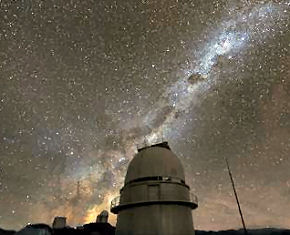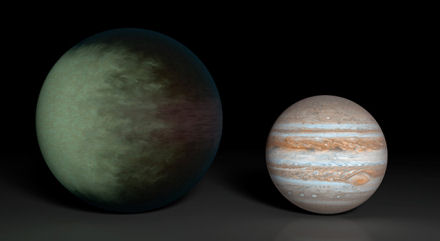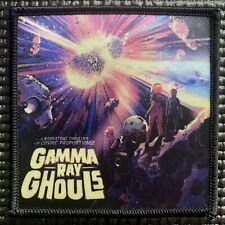
Working with data from telescopes located around the world, an international team of astronomers have shown that planets around stars are the rule rather than the exception and that there are likely billions of planets in our galaxy where humans could live.
Reporting their findings in Nature, the team say that most of the Milky Way’s 100 billion stars have planets that are very similar to the Earth-like planets in our own solar system (Mercury, Venus, Earth and Mars), while planets like Jupiter and Saturn are relatively rare. “On average, there are 1.6 planets in the area around the stars that corresponds to the area between Venus and Saturn,” explained team member Uffe Gr�e J�rgensen, from the Niels Bohr Institute at the University of Copenhagen.
The new findings are important, as while new exoplanets are constantly being discovered, a much more basic question remains: how commonplace are planets in the Milky Way?
Most exoplanets have been found either by detecting the effect of the gravitational pull of the planet on its host star or by observing the planet as it passes in front of its star and slightly dims it. Both of these techniques are most sensitive to planets that are either massive or close to their stars.
The new work used a different method known as gravitational microlensing, which can detect planets over a much wider range of mass and orbital variables. In microlensing, exoplanets are detected by the way that the gravitational field of their host stars acts like a lens, magnifying the light of a background star. If the star that acts as a lens has a planet in orbit around it, the planet can make a detectable contribution to the brightening effect on the background star. Microlensing has the potential to detect exoplanets that could never be found any other way but it does require a very rare alignment of the lensing star and the background star to be seen.
This means that finding a planet by microlensing is not easy, in the six year’s worth of microlensing data used in the analysis, only three exoplanets were actually detected: a super-Earth, and planets with masses comparable to Neptune and Jupiter. But by microlensing standards, this is an impressive haul. In detecting three planets, either the astronomers were astonishingly lucky, or, planets are so abundant in the Milky Way that it was inevitable.
Combining data from the three positive exoplanet detections with seven additional detections from earlier work (as well as the huge numbers of non-detections in the six year’s worth of data), the team calculated that one-in-six of the stars studied hosts a planet of similar mass to Jupiter, half have Neptune-mass planets and two-thirds have super-Earths.
“We used to think that the Earth might be unique in our galaxy. But now it seems that there are literally billions of planets with masses similar to Earth orbiting stars in the Milky Way,” added team member Daniel Kubas, from the Institut d’Astrophysique de Paris.
Related:
Discuss this article in our forum
Springtime on Earth II
Running the numbers on alien life
SETI needs to see the light, say astrophysicists


















Comments are closed.